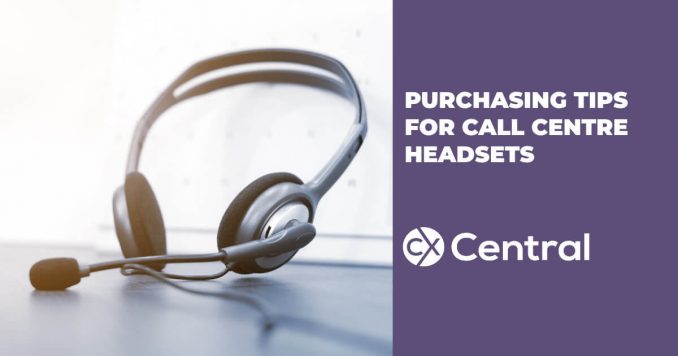
Tips for purchasing call centre headsets
Though seemingly insignificant in comparison to other greater influences on customer experience, the humble headset plays a pivotal role in delivering the highest level of customer service, positively impacting your customer experience.
After all, your call centre agents are attached to one for their entire shift whether they are working in the office or embracing the new world of remote working (or perhaps a combination of both in a hybrid workplace).
And you already know the link between employee engagement and customer satisfaction right?
To avoid your call centre becoming the butt of the old cliche ‘you’re only as good as your equipment’, use these tips for purchasing call centre headsets to ensure your frontline staff are working with equipment that enables them to perform at their best.
It’s the least you can do for them.
4 Tips for purchasing contact centre headsets
1. Headset quality is paramount
With ever-evolving technology at your heels, it’s important to invest in the best you can afford.
This doesn’t mean breaking the bank on headsets, only that low-cost devices are low cost for a reason.
Durability, quality and comfort are the key points to consider when purchasing headsets for your call centre.
After purchase care is also especially important, to ensure this upfront investment ultimately reduces cost-per-wear and limit downtime caused by faulty headsets.
Headset Certification should be required for call centre use.
Headset certification should include features such as built-in electro-static shock protection and acoustic shock protection.
Although basic considerations, they play a significant role in workplace safety.
2. The comfort factor
The Headset Comfort Factor is vital to making a smart headset purchase.
It is important to ensure that your agents’ headsets are specifically designed for all-day wear, in line with occupational health and employee well-being measures.
There are a number of key features in terms of comfort to the wearer that should play a part in the decision-making process:
- Soft ear cushions for comfort (and hygiene)
- Lightweight headset frame
- An option of wearing styles
- A choice of mono or duo speaker variants to suit the working environment and individual users
3. Sound quality
Headset Sound Quality is a crucial benchmark for all contact centre types, small and large.
Noise cancellation is critical to a positive customer experience.
Not only do we minimise cause for repetition, but the customers have a feeling of confidence with regard to confidentiality.
Nothing worse when customers are able to hear the agents conversation who’s sitting next to you.
Especially if the conversations are confidential in nature or revealing sensitive information such as credit card details, personal information etc.
Allocating the appropriate attention to researching and selecting the best-suited headset for your call centre agents will be worth the investment in the long-term with returns in productivity, efficiency and overall job satisfaction among your team.
4. Headset Training
Yes, headset training.
OK, so it’s more an after purchase thing but it’s something that often gets missed.
Though a second nature process on the surface, some initial training on the use of the headset can provide employees with the opportunity to maximise the benefits from their headsets, and increase equipment lifespan, therefore decreasing the need for replacements.
Introductory headset training should include, feature explanations, proper care instructions and cleaning and storage.
Some suppliers will include training for Team Leaders, Managers etc to ensure all employees know exactly what they are doing with their call centre headset from day one.
Recommended Links:
- Read: A guide to purchasing call centre technology
- Learn: Listen or watch the CX Central Podcast discussing call centre headsets including:
- The different connection types
- The difference between Bluetooth and DECT for wireless headsets
- Noise cancellation and acoustic shock protection
- Purchase: Search industry suppliers of office phones and call centre headsets
- Laugh: 7 Things that only a call centre agent would understand




Be the first to comment